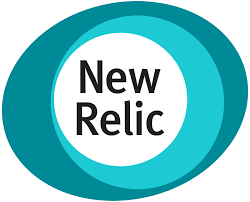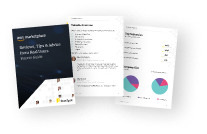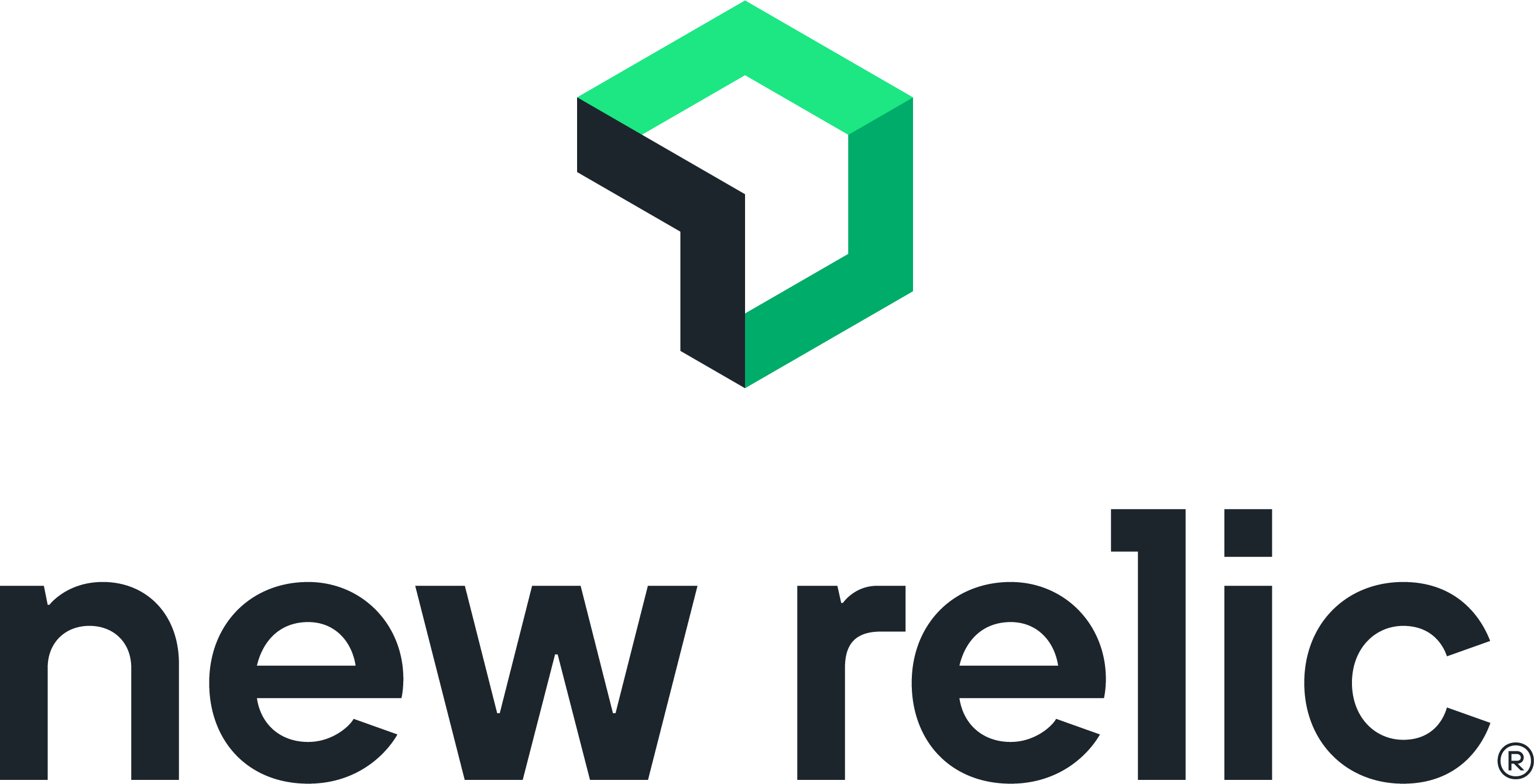
Overview
New Relic Solutions [DSOR] combines the benefits of the Private Offer feature along with Carahsoft's contract vehicles in providing customers a seamless acquisition process for their cloud-based products and solutions from AWS Marketplace.
Real, actionable insights into your stack: Correlate issues across your stack. Debug and collaborate from your IDE. AI assistance at every step. All in one connected experience - not a maze of charts.
Dashboards, alerts, and integrations all in one place: Our Instant Observability quickstarts bundle everything you need to start monitoring like a pro right out of the box.
Troubleshoot infrastructure before. Not after: Find root cause faster. Correlate infrastructure health with performance and customer impact on one platform.
Quickly integrate with hundreds of tools and open standards: Integrate easily with leading cloud providers. New Relic is committed to open standards, open instrumentation, and the open communities that support them.
This listing is for Private Offers ONLY. Please reach out for more details. Thank you.
Highlights
- Monitor, debug, and improve your entire stack.
Details
Unlock automation with AI agent solutions

Features and programs
Buyer guide

Financing for AWS Marketplace purchases
Pricing
Dimension | Description | Cost/12 months |
|---|---|---|
New Relic | New Relic per User. Data Charges not included. | $6,588.00 |
Vendor refund policy
Please contact seller for offering specific policy.
How can we make this page better?
Legal
Vendor terms and conditions
Content disclaimer
Delivery details
Software as a Service (SaaS)
SaaS delivers cloud-based software applications directly to customers over the internet. You can access these applications through a subscription model. You will pay recurring monthly usage fees through your AWS bill, while AWS handles deployment and infrastructure management, ensuring scalability, reliability, and seamless integration with other AWS services.
Resources
Vendor resources
Support
AWS infrastructure support
AWS Support is a one-on-one, fast-response support channel that is staffed 24x7x365 with experienced and technical support engineers. The service helps customers of all sizes and technical abilities to successfully utilize the products and features provided by Amazon Web Services.
Similar products





Customer reviews
Has enabled faster detection of performance issues and improved application health monitoring using dashboards and alerts
What is our primary use case?
My main use case for New Relic is to monitor application health on a daily basis. Starting with my day, I go to the dashboards to check how the application health is and any alerts already triggered for the application, whether it concerns disk, memory, CPU, or how the applications are running. Recently, we had a slow query running for the application, which was really the bottleneck as it took a long time for the application to respond, and we found it out by using New Relic to identify the slow query, which really helped me.
To troubleshoot and resolve the slow query issue once New Relic points it out, I generally go to the Application Performance Monitoring , which is APM , and then I check in APM for the query where there are different tabs, including one for the database. After that, I go and check the database, which shows what query is taking how much time. Since we are using Java applications, we can see how much time the queries take. We are also using some Cassandra for caching purposes, which can show that query. I checked with the developer about a simple select query that took a long time, and after I spoke with them, they fine-tuned that query, resolving the issue. New Relic proved really helpful in finding out the slow query.
What is most valuable?
New Relic is easy to use even for someone with no knowledge; by seeing the dashboard, they can easily find out the application's health and notice what is happening. This is a significant advantage compared to other APM monitoring tools, and another aspect I appreciate is its good alerting mechanism, which can throw alerts and can be configured with PagerDuty or Slack, allowing easy checks on triggers and troubleshooting using New Relic.
The best features New Relic offers include APM, which stands out most prominently, along with Synthetic monitoring, which also really helps. Infrastructure can be checked too, but since our organization is using these modules, through APM, I can see the heap memory, application CPU, and memory, which are crucial from the application's perspective. Multiple alerts can also be configured using APM, making it extremely interesting.
Synthetic monitoring is similar to a mix of APM and other tools. I can create multiple dashboards using Synthetics, allowing me to view synthetic monitoring in a single shot, which gives good confidence in checking my day-to-day work.
New Relic features customized monitoring, which allows us to customize and distribute dashboards, and it really helps us. New Relic has positively impacted my organization by providing faster detection capabilities, allowing us to easily find issues, which is the best advantage. We can also improve application performance by finding the actual root cause of issues, which I find really beneficial.
Regarding faster detection and improved performance, there are instances where, when the application specifies its heap memory around 20 GB, and it tries to reach about 90%, New Relic immediately detects the heap memory alert, sends it over Slack, and even calls us using Slack. This lets us easily detect the issue and delve into what Java is causing that high heap memory usage, allowing us to investigate further.
What needs improvement?
New Relic can get pricey for larger organizations.
Specifically, it's the pricing for larger scale deployments that could be improved.
For how long have I used the solution?
I have been working in my current field for almost six years, and I have been using New Relic for almost five years.
What do I think about the stability of the solution?
New Relic is 100% stable in my experience.
What do I think about the scalability of the solution?
The scalability of New Relic is very high, as I have never seen any downtime issues or similar problems.
How are customer service and support?
I have reached out to customer support multiple times for various cases, particularly for customization such as creating dashboards, and my experience has been good.
How would you rate customer service and support?
Positive
What other advice do I have?
I would advise others looking into using New Relic that it is friendly, easy to use, and distributed, with NRQL queries that you can easily write to check for issues.
New Relic is a very good product in the market compared to others; it is really helpful for beginners as they learn about this product, and it proves beneficial when performing longevity tests to find latency issues, making it very interesting to identify where actual latencies occur, resulting in it being an excellent product from my perspective.
On a scale of 1-10, I rate New Relic a 10 out of 10.
Has improved monitoring efficiency with robust alerting and automation features
What is our primary use case?
I have worked with New Relic for approximately three to four years.
What is most valuable?
The best features in New Relic include its numerous API integrations and a good source of support. The support is excellent, and they provide blogs and forums. There is something called NRQL, New Relic Query Language, which can be used to query many things and retrieve data. Using API calls allows you to automate and pull a dashboard out of it, making manipulation easily done. These are some things I have done with New Relic as an end customer.
It reduces the operational overhead. Your data is monitored end to end, which could be directly linked with the SLA and SLO. That is the main thing.
What needs improvement?
New Relic can be improved by incorporating an automated incident analysis solution. They have comprehensive enterprise data, and based on that, they could generate and forecast things. They can predict anomalies, and even though anomaly prediction is already there, it can be improved.
Using real-time data, if there are any malicious patterns or something happening, they can identify those. They really need to stream the data and have something important running, such as predicting or identifying any suspicious activity. If they could develop these features, it would be very beneficial.
What do I think about the stability of the solution?
In my opinion, New Relic is a stable solution.
How are customer service and support?
I would rate the technical support from New Relic as nine out of ten.
How would you rate customer service and support?
Positive
How was the initial setup?
The initial setup of New Relic is pretty easy. It is very well documented.
What about the implementation team?
The deployment of New Relic was done in-house.
What was our ROI?
I am not sure about ROI as I have not gone over that. However, it reduces the operational overhead. Your data is monitored end to end, which could be directly linked with the SLA and SLO. That is the main thing.
What other advice do I have?
I have experience with various Amazon solutions, but I am not really involved in the data-related role. My scope is that I work within some specific services. In my organization, I am part of an engineering team where I work only with these specific things. I love to explore these things, but I do not have much hands-on experience, and I am not a subject matter expert.
I have worked with Zabbix and Grafana . Grafana is a visualization tool that allows you to ingest existing data and visualize it while taking a report out of it. It is a great monitoring dashboard tool. Currently, in my company, they are using other solutions DataDog and New Relic. However, I would choose Grafana. It is open-source, and the enterprise edition is also available. The open-source version is more than enough for an enterprise to have their data visualized.
New Relic is suitable for banking domains, investment brokerage products, or anything related to high-security data. Organizations might use New Relic because they want their data stored and they want the support. It works as a whole monitoring solution, including logging, monitoring, and application profiling tools. It has a good set of API for managing alerts, and many automations can be done in New Relic. It is an enterprise solution that requires payment.
I rate New Relic eight out of ten.
Which deployment model are you using for this solution?
If public cloud, private cloud, or hybrid cloud, which cloud provider do you use?
Reviewing diverse tools has streamlined error tracking with effective data analysis
What is our primary use case?
Our main focus is APM-related functionality, so we were looking for a convenient way to get all the details, as some of them are missing from New Relic and Grafana . Currently, we are working with Site24x7, where we are getting the information we are looking for in our comfort zone.
We used the Docker container as the agent in our server, which was split into one agent to collect the client's logs and metrics to see the web vitals, and another metric to collect the server metrics and APM-related traces.
What is most valuable?
The main benefit we found was the Error Inbox, and having all features available at a single point was very useful for us. The API functionality allows us to get hit counts from external sources, such as APIs or databases, and everything is mapped very clearly. We can overview which components are experiencing response delays, which ones are getting correct responses, and identify any unknown external APIs inside the application. We can investigate why we are getting 400 responses and similar issues.
What needs improvement?
I reviewed another observability tool, DataDog, and we moved away from New Relic because the pricing was not convenient and didn't fit our budget. With DataDog, some of the APM features we were looking for were not available, so we discontinued using both solutions.
Grafana is helpful, but it requires significant work in adding agents and configuring applications and server metrics. We implemented open-source Grafana, which wasn't convenient regarding APM , and most of the logs and traces related to APM were not what we needed, so we moved to Site24x7.
The Grafana Open Source implementation was done through their vendor. While they provided certain features, when compared to Grafana Cloud, the customized Open Source version wasn't really convenient for us. The only helpful aspect was that we could get server metrics on Grafana Open Source from our servers.
For how long have I used the solution?
I have been working with New Relic for approximately six months.
What do I think about the stability of the solution?
New Relic was stable enough, and there were no downtimes or issues.
What do I think about the scalability of the solution?
New Relic offers 400 GB per month free, but that quota was completely used within two weeks for a single server. We have substantial data in our server as our company is a trading financial company. For a single server, it takes around one and a half to two weeks to reach the limit. Additionally, we need to store logs for over five years based on SEBI regulations.
How are customer service and support?
I didn't seek any support help from New Relic, but when I tried to get information regarding the plans, the response was delayed for a week. Other than that, everything was fine.
How would you rate customer service and support?
Positive
Which solution did I use previously and why did I switch?
We reviewed Grafana and moved to another observability tool. We also evaluated DataDog, but we ultimately moved away from New Relic because the pricing wasn't convenient and didn't fit our budget. We are now using Site24x7 in production.
How was the initial setup?
Implementing the New Relic agent is quite simple, and we were very comfortable with New Relic overall. However, it wasn't convenient based on our budget, which is why we discontinued using it.
What about the implementation team?
The Grafana Open Source implementation wasn't done by ourselves; we worked with their vendor. They explained the features available in Grafana Open Source, and we implemented those solutions. However, compared to Grafana Cloud, the customized Open Source version wasn't really convenient for us.
Which other solutions did I evaluate?
The Error Inbox and consolidated features at a single point were very useful features. We could get hit counts from external sources, APIs, and databases, with clear mapping of all components. We could monitor response delays, correct responses, and identify unknown external APIs within the application.
We also reviewed DataDog as an observability tool, but we moved away from New Relic due to pricing concerns that didn't fit our budget. With DataDog, some of the APM features we were seeking weren't available, so we discontinued using both solutions.
What other advice do I have?
We had everything in hand with New Relic initially. However, the pricing wasn't convenient for us, so we had to step back from using it.
I primarily focused on the data we were getting from New Relic, without exploring custom dashboards and other features. We were mainly focusing on the metrics and logs needed to trace our applications effectively.
On a scale of one to ten, I would rate New Relic an eight. It's overwhelming from my point of view, and we needed to do some organizing in our New Relic account based on our preferences.
Streamlines troubleshooting with robust dashboards but needs better alert customization
What is our primary use case?
I use New Relic for the creation of dashboards, alerts, and any type of observability resources that are relevant for my company.
What is most valuable?
The most valuable features of New Relic are the ease of creating dashboards and its integration capabilities with many external tools. It enhances operational response by providing analytics and alerts that help us address issues quicker.
Using New Relic speeds up troubleshooting and resolution, giving us a clearer picture of where issues are, thus saving time and effort.
What needs improvement?
Email alert customization is limited; it cannot be tailored much, which makes the system more rigid than optimal. The handling of logs from integration tools is not as advanced compared to other tools. AI integration, including predictive analytics, is available for certain features but is not comprehensive.
For how long have I used the solution?
I have been using New Relic for one year.
What do I think about the stability of the solution?
I find New Relic to be a stable tool. It is reliable in the aspects that I use.
How are customer service and support?
While responsive, customer service does not always provide straightforward solutions immediately. Issues that could be solved quickly sometimes take longer because they go around in circles. However, they are helpful when direct interaction is initiated.
How would you rate customer service and support?
Neutral
How was the initial setup?
The setup is easy for the part I'm responsible for. However, since I do not manage the complete product setup, I cannot comment on the entire process.
What was our ROI?
For our part, New Relic has provided value by speeding up issue troubleshooting and resolution, allowing for more efficient use of time.
What other advice do I have?
I rate New Relic seven out of ten.
For those looking to use New Relic, it is more suited for networking and infrastructure monitoring rather than application performance monitoring, integration, or API log handling.
Efficient network monitoring with robust APM and alerting capabilities
What is our primary use case?
I use New Relic for monitoring and observing the entire environment. It offers end-to-end monitoring and observability to predict potential impacts in the coming weeks. For instance, it can detect if two endpoints start consuming more bandwidth than usual, thereby providing more insights about potential impacts on the environment.
How has it helped my organization?
New Relic helps us maintain and shape the environment from a network perspective by providing end-to-end monitoring and observability. It offers insights into normal and peak behaviors, alerts us to any issues, and assists with remediation plans.
What is most valuable?
The APM feature is highly valuable as it can record session hosts, usage, and diagnose customer behaviors. Additionally, we can simulate user actions to assess the user experience. The alerting capabilities are also efficient, sending emails and desktop notifications, and providing remediation options.
What needs improvement?
The pricing could be improved as it is quite high relative to what is offered. The cost versus performance efficiency could be better. Apart from that, I don't need any specific improvements to the features themselves.
For how long have I used the solution?
I have been working with New Relic for over one and a half years.
What do I think about the stability of the solution?
New Relic is highly stable. I have never experienced an outage or any misbehavior with this solution.
What do I think about the scalability of the solution?
New Relic offers high scalability. It is quite flexible and can scale according to our needs.
How are customer service and support?
The technical support team for New Relic is good. I would rate them a nine out of ten.
How would you rate customer service and support?
Positive
Which solution did I use previously and why did I switch?
Before New Relic, we did not use any specific solution for observability. We used normal monitoring tools.
How was the initial setup?
The initial setup of New Relic is super easy and straightforward. It involves proposing the solution to the client, activating administrative users, and customizing dashboards and alerts based on customer needs. Training and preparation made the process smooth and efficient.
What about the implementation team?
The deployment typically requires two to three tier-one or tier-two team members from the technical team.
What's my experience with pricing, setup cost, and licensing?
The pricing is relatively high. It can be quite costly compared to the performance efficiency, making it not very value for money, especially for smaller businesses.
Which other solutions did I evaluate?
We evaluated several other options like Datadog . However, after comparing prices and support, we chose New Relic.
What other advice do I have?
Do not implement New Relic until you have identified your needs and ensured that it meets your specific requirements. Proper assessment and planning are crucial.
I'd rate the solution eight out of ten.